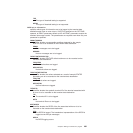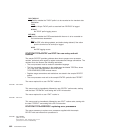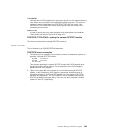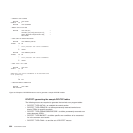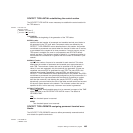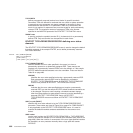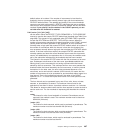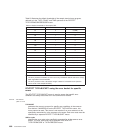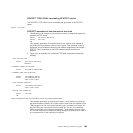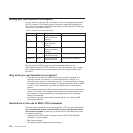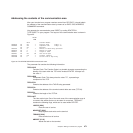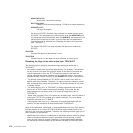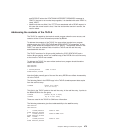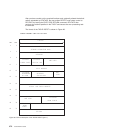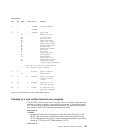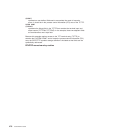DFHTEPT TYPE=FINAL–terminating DFHTEPT entries
The DFHTEPT TYPE=FINAL macro terminates the generation of the DFHTEP
tables.
DFHTEPT–examples of how the macros are used
1. The following is an example of the minimum number of statements required to
generate the TEP tables:
DFHTEPT TYPE=INITIAL,MAXTIDS=10
DFHTEPT TYPE=FINAL
END
This example generates 10 reusable terminal error blocks, each capable of
accounting for the maximum number of error types. Time threshold control is
supported, and all threshold values are the defaults supported by the sample
DFHTEP. This is equivalent to the CICS-supplied sample terminal error
program.
2. Figure 24 is an example of a customized TEP table (continuation characters
omitted).
This example generates 10 terminal error blocks, one of which is reserved for
the terminal whose symbolic ID is TM02, and the other nine are reusable. Each
TEB has space for five error status elements plus a common error bucket. Of
the five ESEs, two are reserved for error codes ‘81’ and ‘87’; the remaining
ESEs are available to be assigned dynamically. The thresholds for error code
‘87’ and the common error bucket are being changed. No specific error code is
to be accounted for in the common error bucket.
DFHTEPT TYPE=FINAL
* TABLE SPECIFICATIONS
DFHTEPT TYPE=INITIAL,MAXTIDS=10,
MAXERRS=5
* PERMANENT TERMINAL DEFINITIONS
DFHTEPT TYPE=PERMTID,TRMIDNT=TM02
* PERMANENT ERROR CODE DEFINITIONS
DFHTEPT TYPE=PERMCODE,CODE=81
DFHTEPT TYPE=PERMCODE,CODE=87,
COUNT=2,TIME=(1,MIN)
* OTHER THRESHOLD OVERRIDES
DFHTEPT TYPE=ERRCODE,CODE=BUCKET,
COUNT=3,TIME=(3,MIN)
* CONCLUDE TABLE GENERATION
DFHTEPT TYPE=FINAL
END
Figure 24. Example of the use of DFHTEPT macros to generate DFHTEP tables
Chapter 8. Writing a terminal error program 469



